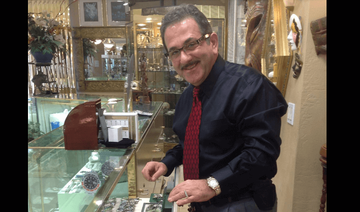
Woman behind Trump during rally was NOT FBI assistant director Janeen DiGuiseppi
Woman behind Trump during rally was NOT FBI assistant director Janeen DiGuiseppi
The FBI has confirmed that the woman seen behind Donald Trump during his Pennsylvania rally is not FBI Assistant Director Janeen DiGuiseppi, contrary to a theory circulating online. The baseless theory emerged from a blurry video clip that went viral, with online users erroneously claiming that the woman in the footage was DiGuiseppi. The video, showing a woman’s indistinct features, was enough to ignite a firestorm of speculation and conspiracy theories across various social media platforms.
The rumor mill did not stop there. Along with the misidentification, some users claimed that the woman, alleged to be DiGuiseppi, gave a nod before gunman Thomas Matthew Crooks opened fire. This purported signal, according to the conspiracy theorists, was interpreted as a covert instruction for the shooter to act. However, this theory has been widely discredited by both political spectrums and has faced strong backlash from experts and the FBI itself.
The quick spread of this misinformation reflects the current climate of distrust and the ease with which unfounded rumors can gain traction. Despite the lack of any clear visual evidence, those promoting the conspiracy theory insisted that the woman was indeed the Assistant Director of the FBI’s Insider Threat Office. This assertion was repeatedly debunked by experts, who pointed out the impossibility of such a high-ranking official being involved in such a manner and in such a public setting.
“If you believe the assistant director of the FBI was sitting front row at a Trump rally to ‘give instructions’ to the shooter, you are an absolute moron. Like, next-level stupid,” wrote a Red State journalist known as Bonchie on X, echoing the sentiment of many who viewed the theory as not only absurd but dangerously misleading. The statement highlights the frustration and incredulity felt by many who watched the theory gain unwarranted attention.
Both conservatives and liberals have condemned the theory. It is rare to see such bipartisan agreement, but the outlandish nature of the claim managed to unite disparate political groups in opposition. Critics from all sides pointed out that such baseless accusations do nothing but sow division and distract from the real issues at hand. The quick debunking of the theory also underscored the importance of critical thinking and verifying information before accepting it as truth.
The FBI was quick to respond to the allegations. “The allegations circulating on social media about an FBI executive and the rally in Butler, Pennsylvania, are categorically false,” an FBI spokesman stated. This clear and firm denial from the FBI was meant to put an end to the speculation, though the persistence of conspiracy theories online suggests that misinformation is not easily quashed. The FBI’s swift response was crucial in preventing the spread of potentially harmful and completely unfounded rumors.
Experts weighed in, noting that the phenomenon of conspiracy theories is not new but has been exacerbated by the prevalence of social media and the echo chambers it creates. Theories like this one, despite being thoroughly debunked, can continue to thrive in certain corners of the internet where mistrust of official sources runs high. This incident serves as a reminder of the need for media literacy and skepticism towards unverified claims, particularly those that seem to fit neatly into preconceived narratives.
Despite the clear denial from the FBI and widespread condemnation from across the political spectrum, some users continue to cling to the conspiracy theory. This persistence is often fueled by confirmation bias, where individuals prefer information that confirms their existing beliefs and disregard information that contradicts them. The viral nature of the video and the ease with which misinformation spreads on platforms like X contribute to the ongoing challenge of combating false narratives.
In conclusion, the theory that FBI Assistant Director Janeen DiGuiseppi was behind Trump during his Pennsylvania rally and signaled to a gunman is entirely unfounded and has been robustly debunked by experts and denied by the FBI. The rapid spread and persistence of such a theory underscore the challenges posed by misinformation in the digital age. It highlights the importance of critical thinking and the responsibility of both individuals and platforms to ensure that information is accurate and reliable.



